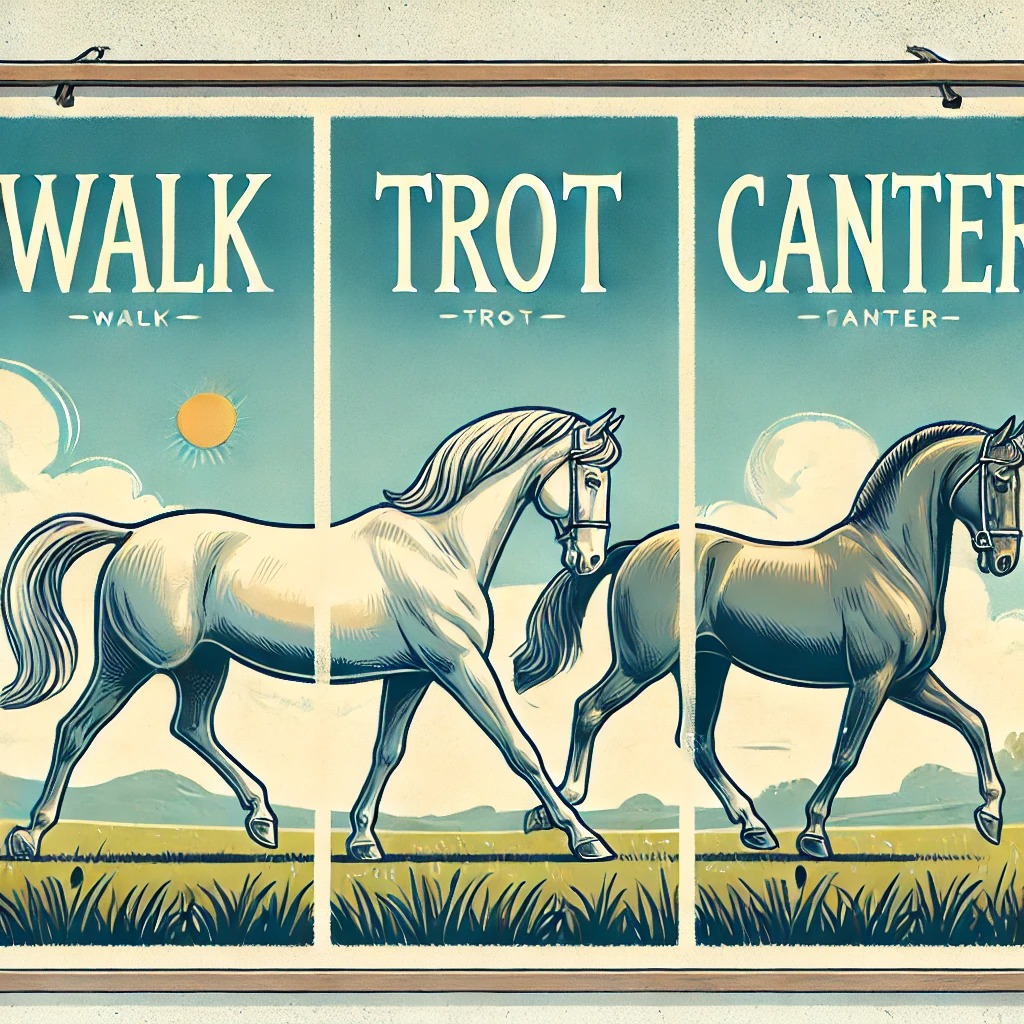Horse Gaits: Walk, Trot, and Canter Explained
Understanding the gaits of a horse is fundamental for riders, trainers, and enthusiasts alike. Each gait serves a specific purpose and has unique characteristics that define its movement. In this post, we’ll explore the three primary horse gaits: the walk, trot, and canter.
1. The Walk
Characteristics:
- The walk is a four-beat gait, meaning that each hoof strikes the ground independently.
- This gait is the slowest and most relaxed of all horse movements.
Motion Breakdown:
- The sequence of footfalls is as follows: the right hind, right front, left hind, and left front hooves.
- The horse moves its body forward in a steady, rhythmic manner, allowing for a smooth and comfortable ride.
Purpose:
- The walk is ideal for warming up, cooling down, and leisurely rides. It is a foundational gait that allows the horse to stretch and relax.
2. The Trot
Characteristics:
- The trot is a two-beat gait, with a diagonal pairing of the horse’s legs.
- This gait is faster than the walk and is often used for training and exercise.
Motion Breakdown:
- The sequence is: the left hind and right front hooves move together, followed by the right hind and left front hooves.
- This creates a bouncing motion that requires good balance from the rider.
Purpose:
- The trot is essential for building strength and endurance in horses. It allows riders to practice posting or sitting, enhancing their riding skills.
3. The Canter
Characteristics:
- The canter is a three-beat gait, faster than both the walk and trot, providing a smoother ride at higher speeds.
- It can be performed in different leads, affecting the horse’s balance and movement.
Motion Breakdown:
- The sequence involves the outside hind leg, the inside hind and outside front legs together, and finally, the inside front leg.
- This rhythm creates a distinctive rocking motion that can be exhilarating for the rider.
Purpose:
- The canter is often used in competitive riding and is great for building speed and agility. It offers a dynamic experience, making it a favorite among many riders.
Conclusion
Understanding the mechanics of horse gaits not only enhances your riding experience but also strengthens your relationship with your horse. By mastering the walk, trot, and canter, you’ll gain confidence and improve your skills in the saddle.
For a deeper dive into horse gaits and their mechanics, check out this informative YouTube video

